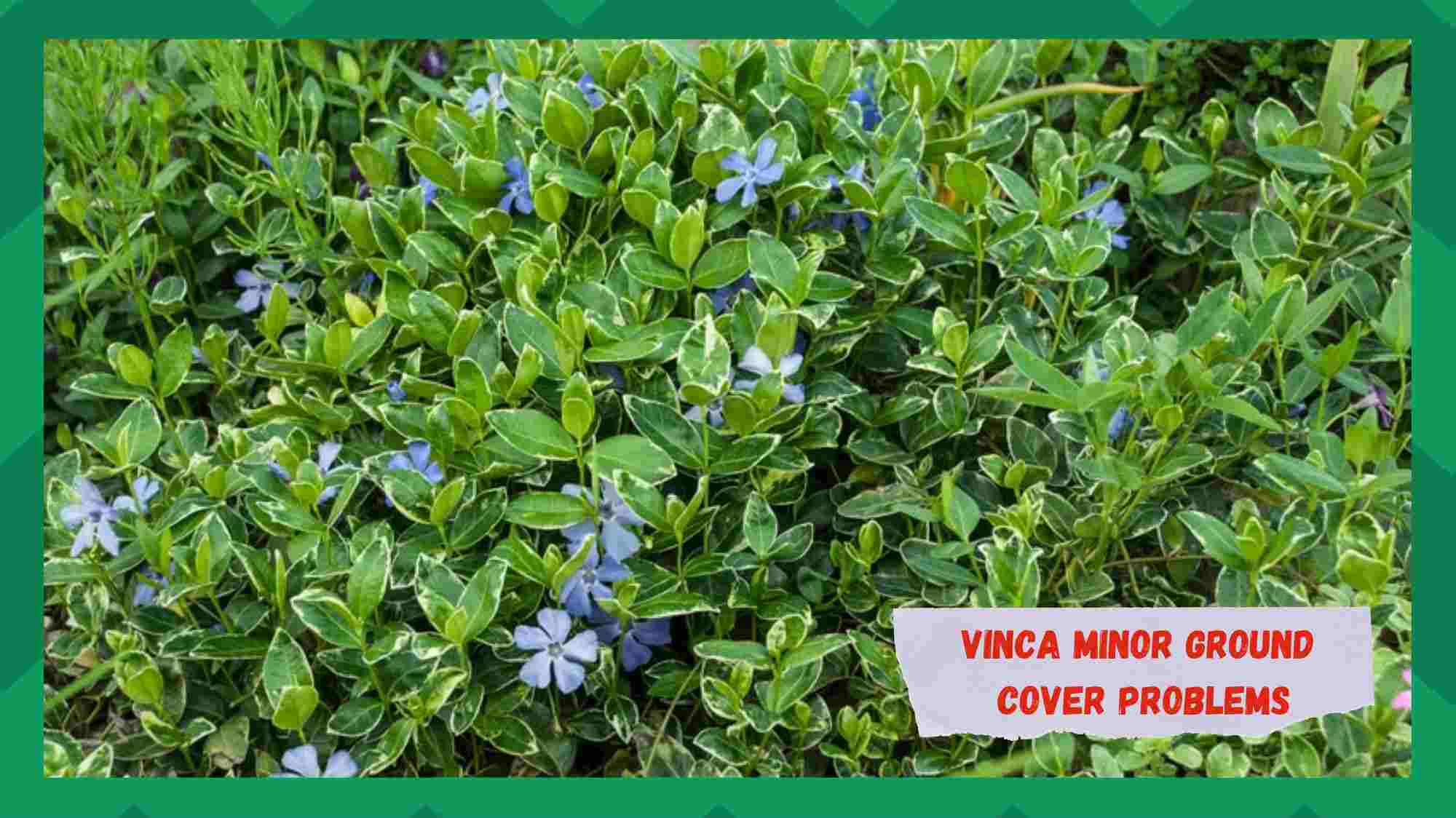
Vinca is among the most widely grown plants across the globe. It is a flowering plant from the group Apocynaceae and is also known as Madagascar and periwinkle.
It is loved for its low-maintenance needs and stunning look. It has both annual and perennial varieties and happens to be drought resistant by nature.
Vinca ground cover or creeping periwinkle is a famous variety of vinca plants. As its name implies, it is used as ground cover for covering large areas. It is known for its rapid growth and lush green color.
It is deer and rabbit-resistant, and not many insects eat it, making it a great option for ground cover. Broadleaf foliage, low maintenance requirements, and blue flowers are some of the many reasons to love vinca ground cover plants.
If you are a landscaper, you’d know that every plant starts showing problems over time. Of course, vinca ground cover plants are no exception. Regardless of their amazing drought tolerance, they can develop several problems.
If you are growing these plants, it is important to familiarise yourself with these problems so that you’d know what to do to fix them.
In this article, we will take a look at some of the most common problems that you will likely face while growing vinca ground cover plants. Let’s delve deeper without any further ado!
Vinca Minor Ground Cover Problems
Some common vinca minor ground cover problems are mentioned below.
Plants drying out is the most common problem associated with vinca ground cover plants. More often than not, it happens when these plants are exposed to direct sunlight for a long time.
No doubt, plants require sunlight to make their food. However, when kept under direct sunlight, they take more energy than they can handle. This affects their growth and often causes them to dry out.
Even though it’s not a death sentence for your vinca ground cover plants, it will surely deteriorate their health and make them more susceptible to pests and diseases. These plants need up to eight hours of sunlight for optimal growth.
So, keeping them exposed to direct sunlight for longer can cause many problems. This is why it is important to protect your plants from harsh sunlight if they don’t need it.
Using a shade cloth is an excellent way to protect your plants from sunburn in summer. No matter how sun-loving your plant is, it will need protection from harsh sun rays during summer. The good news for you is that there are lots of ways to protect your vinca ground cover plants in summer.
The shade cloth is made of specific materials to filter sunlight. Nowadays, clothes of different percentages are available in the market. The percentage refers to the percentage of sunlight it blocks.
For example, a shade cloth with 60% blockage means that it will block 60% of the sunlight and let 40% pass through it. The higher the percentage, the better its protection from sunlight.
Shade cloth with 30-50% blockage works well for most plants. However, if you are growing a shade-loving plant, consider opting for a higher percentage.
You can also use other clothes for this purpose. However, if your area has a hot and dry climate, it would be better to invest in a special shade cover. Whatever cloth you choose to make a shade, make sure it doesn’t block all the sunlight.
Use a cloth that will filter sunlight while ensuring proper airflow. This way, you can reduce the intensity of sunlight on your vinca ground cover plants.
Installing a shade cloth is a simple process. Start by taking measurements of the area you want to cover with the shade cloth. Once you have purchased a shade cloth, attach it to a wooden stake or some other structure at your home.
And yes, make sure that the cloth doesn’t come in contact with your vinca ground cover plants, or else they may get damaged.
Apart from sunlight protection, vinca ground cover plants also need adequate watering to beat the summer heat, especially if they are placed in a sunny area.
As mentioned above, these plants are drought resistant and can tolerate low water conditions to some extent. However, like all other plants, they also need water for survival.
Remember that more water is lost by evaporation in summer. So, make sure to water your vinca ground cover plants thoroughly, so they get enough water to survive.
And yes, it would be a good idea to water them early in the morning as watering them during the hottest hours of the day will lead to more water loss.
It may be often overlooked, but overwatering can also cause your vinca ground cover plants to dry out. When you overwater your plants, their roots are soaked in the water.
This will eventually lead to root rot, and the roots won’t be able to absorb more water. As a result, your vinca ground cover plants will dehydrate and dry out. Therefore, it is important to provide them with just enough water to avoid this situation.
- Vinca Flowers Not Growing
Many landscapers have stated that sometimes the flowers on the vinca ground cover plants don’t grow properly or don’t grow at all. It can happen for many reasons. First, check the drainage mechanism of your plants. If the excess water is not draining properly, you are likely to face this problem.
Making a drainage system for vinca ground cover plants can be tricky. So, if you are unsure about it, consider reaching out to a botanist. They will examine your plants and guide you through the drainage process.
- Plants Not Spreading in Ground Cover
As we all know, vinca ground cover plants spread rapidly and cover a large area. However, it is seen that these plants don’t spread sometimes, even when you water them regularly. If you find yourself in a similar situation, it could be because the plants are not getting sufficient nutrients.
If that’s the case, consider using fertilizer to provide nutrients to your vinca ground cover plants. A fertilizer is a substance that has all the essential nutrients your plants need to flourish. It comes in many types and is available all over the world.
Make sure to read the instructions given on the package before treating your vinca ground cover plants with fertilizer. Avoid overfertilizing, as it can also damage your plants.
The Bottom Line
vinca ground cover is a fast-growing plant often used as a ground cover. It requires minimal maintenance and is fairly drought-tolerant. However, it can also develop a few problems over time.
If you notice your plants have dried up, consider covering them with a shade cloth. Water them regularly during summer and fertilize them if they stop spreading.





